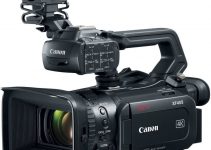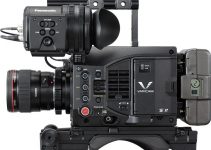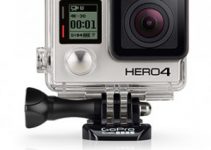With virtually limitless ways to move your camera, motion controlled timelapse videos can be a great asset for your production. They can not only leverage your productivity but can also add better production value to your project. On top of that, shooting such videos has never been easier.
Whether you are going to use your DSLR, GoPro, mirrorless camera or even your iPhone, you can capture some stunning motion timelapse footage on the go. Of course, there are certain considerations you should keep in mind as the most important one probably would be to have the right equipment and accessories in your backpack with you while traveling.
Besides that, the process itself can be a great fun and a truly enjoying experience, especially when you are out in the wild looking for another amazing landscape lit by the last sunrays of the setting sun. Getting those shots, however, often can be a challenge hard to overcome.
Below filmmaker Victor Chimenti of Costal Productions walks us through the following 5 Quick & Easy Considerations when shooting a motion timelapse video out in the wild.
As Victor points out, the location for shooting motion timelapse can vary from a picnic table to the top of a cliff and everything in between. Of course, a mandatory piece of equipment you are going to need, beside your camera and lens kit, is your slider with a motion control system attached on top. In this particular case, the cinematographer is using the Duzi camera slider with a Modo Motion Timelapse System that is extremely portable and lightweight combo, plus it’s extremely suitable for walking out in the wild.
Remember that the setup, planning, and placement of your gear is crucial for your motion timelapse. As a rule of thumb, try to put your slider on a nice sturdy surface, where it’s not going to move around. Also, try to avoid high winds as they may cause unwanted wobbling in your footage that will be hard to be removed later in post. As a rule of thumb, the closer your camera is to the foreground, the more apparent the motion is going to be, hence more interesting and exciting your motion time-lapse you will get.
Don’t lose track of time or miscalculate sequence times as it can result in the loss of a sequence or keep you tied up for extremely long periods of time. Keep in mind that if you want to shoot a 10-second video running at 24fps, you will need 240 still frames. Generally, motion controlled shots take even more time than still ones. Make sure you leave yourself enough time to scout and setup your shot.
For instance, if you set your camera to 10-second intervals that will mean that you will have to shoot 40 minutes before you get all the 240 frames required to complete the shot. I would also recommend leaving a couple of extra seconds before and after each clip in case you want to have more room for variations and more creative decisions while editing later in post.
Always shoot by utilizing manual focus, exposure and white balance on your camera and keep in mind how your timelapse sequences will piece together to tell better your story.
At last but least, be extremely patient, plan your shots accordingly, know your camera move, scout the location in advance and remember that the best way to learn shooting motion timelapse videos is trial and error, just as any other aspect of the creative process.
[via: ISO1200, source: Costal Productions]
B&H Order Links:
Sony A7S II Mirrorless Digital Camera
Cinevate Modo Motion Time Lapse System
Disclaimer: As an Amazon Associate partner and participant in B&H and Adorama Affiliate programmes, we earn a small comission from each purchase made through the affiliate links listed above at no additional cost to you.




